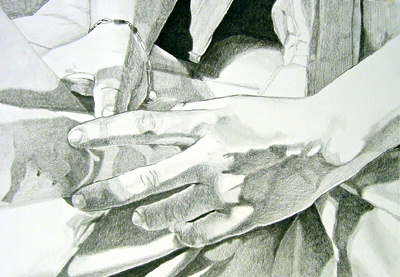All Nonfiction
- Bullying
- Books
- Academic
- Author Interviews
- Celebrity interviews
- College Articles
- College Essays
- Educator of the Year
- Heroes
- Interviews
- Memoir
- Personal Experience
- Sports
- Travel & Culture
All Opinions
- Bullying
- Current Events / Politics
- Discrimination
- Drugs / Alcohol / Smoking
- Entertainment / Celebrities
- Environment
- Love / Relationships
- Movies / Music / TV
- Pop Culture / Trends
- School / College
- Social Issues / Civics
- Spirituality / Religion
- Sports / Hobbies
All Hot Topics
- Bullying
- Community Service
- Environment
- Health
- Letters to the Editor
- Pride & Prejudice
- What Matters
- Back
Summer Guide
- Program Links
- Program Reviews
- Back
College Guide
- College Links
- College Reviews
- College Essays
- College Articles
- Back
"Life Hangs at a Balance"
Dead corpses make people shy away with despair, disgust, or danger. Yet Barb E., 34, clutches the rusted scalpel with determined intentions. The course provides the challenge of no tears, no tossing your cookies, and no troublemaking.
Pre-nursing college course room 102. The Professor, sets restrictions to confine the personal lives of each cadaver.
“You wouldn’t want to be on the bus and be discussing a body you were working on and then someone says, oh gosh, that is my aunt you are talking about,” says Barb, with a laugh.
She remembers the first day, walking into the room with the smell of death overtaking thoughts in her mind. She sits next to a younger gentleman, wiping sweat droplets from his upper brow while turning a gruesome green.
Grutin rolls in a silver cart with a tattered sheet over a mound. No noise can be heard from the classroom. The sheet is ripped from the cart; vomiting can be heard to her right.
“I was amazed to see how it all works. I was fighting against my angst to get up to see the body.”
The professor motions, with a wave, for the students to come forward.
“I was off my feet in an instant, unlike my new friend,” says Barb.
As she comes face to face, she sees the distinct features of the cadaver: a 64-year- old male with freckles covering majority of face and a lean body. One body feature catches her attention.
“I had to take a double take to make sure my eyes weren’t tricking me.”
An American eagle tattoo was draw across his upper chest with an American flag in the background. Ideas run through her head.
“I was thinking to myself. First off, this man was young. Life hangs at a balance and it can be gone in a second. Second off, did he die from the tattoo?” says Barb.
The professor then explains to the class. The ink from the tattoo ran into his organs, causing permanent damage and ultimately, death. This causes her take a step back.
Throughout the remaining weeks of the course, the other cadavers were given names: emphysema man, liver cancer woman, heart failure woman. Barb realizes a pattern in the lab.
“There were no young kids. All the bodies were of middle aged or older people.”
Defacing human bodies doesn’t seem like a common activity although it is still done. Through it may seem peculiar, scientific discoveries are made possible by the donations of bodies. Ten years from now, we may even discover the cure to certain diseases that were not found in Barb's course.

Similar Articles
JOIN THE DISCUSSION
This article has 0 comments.
